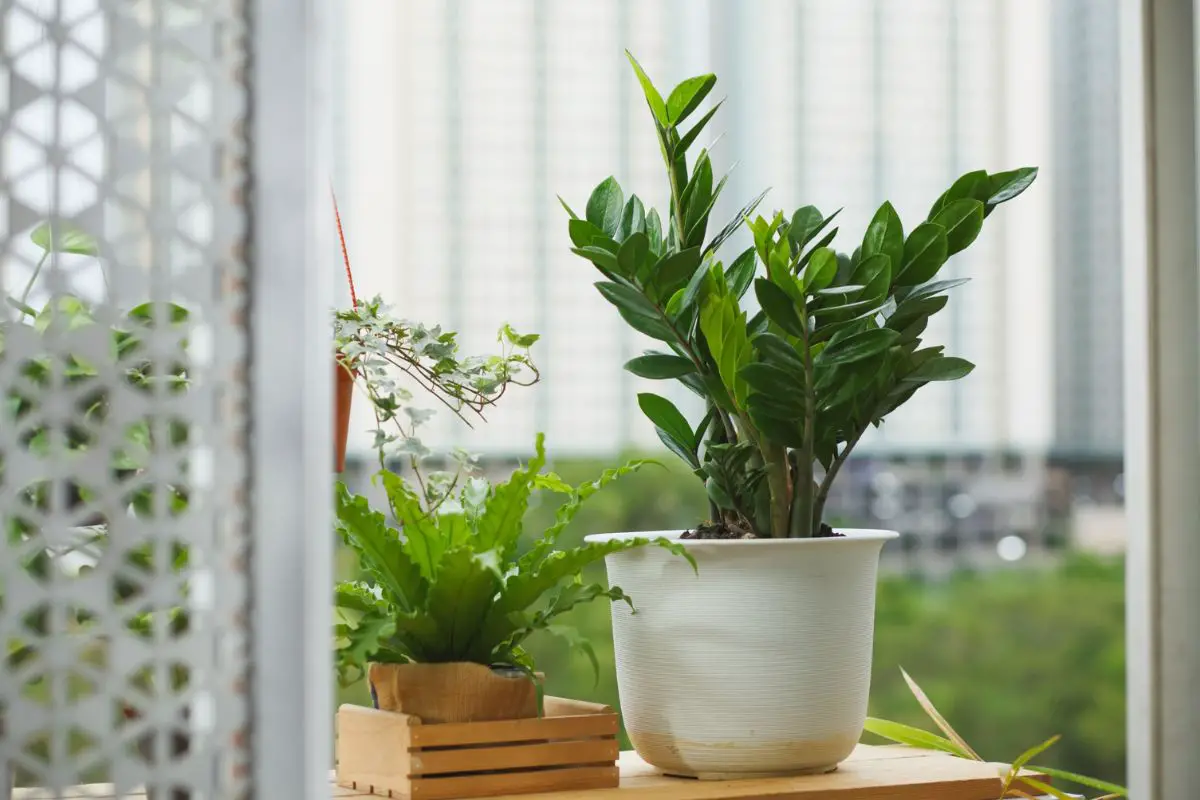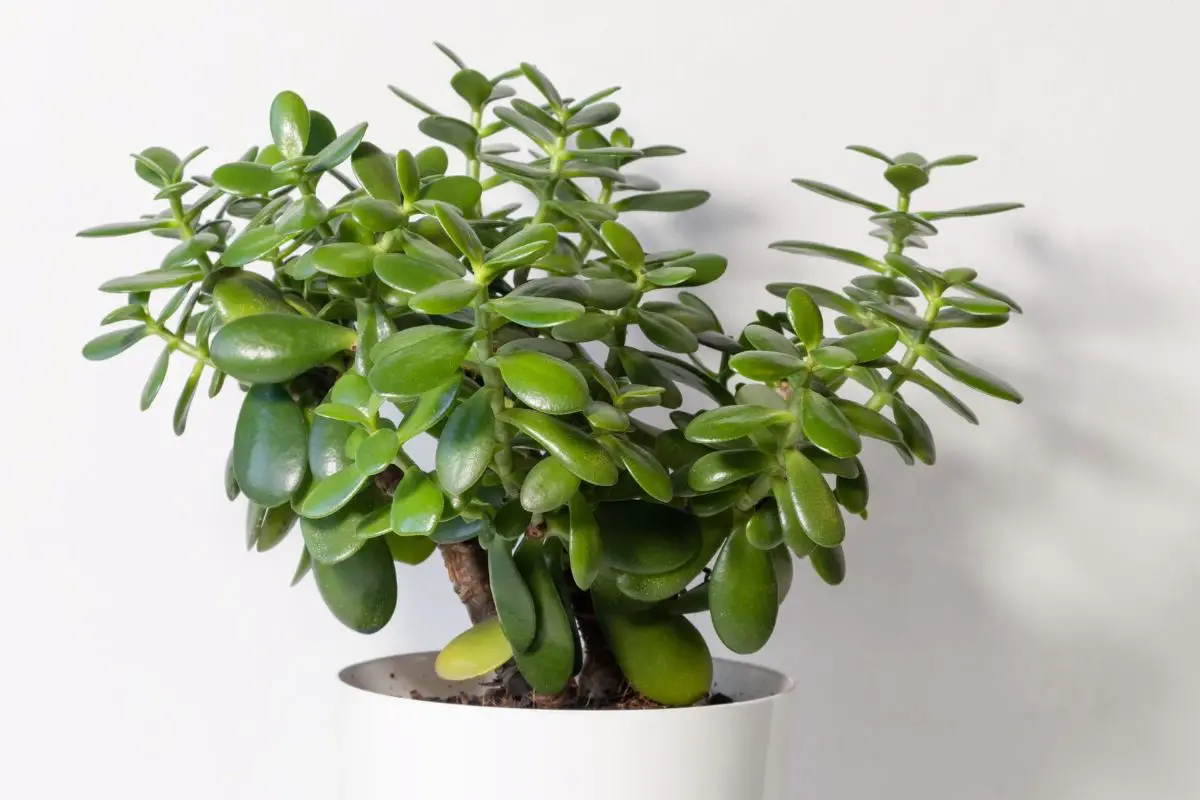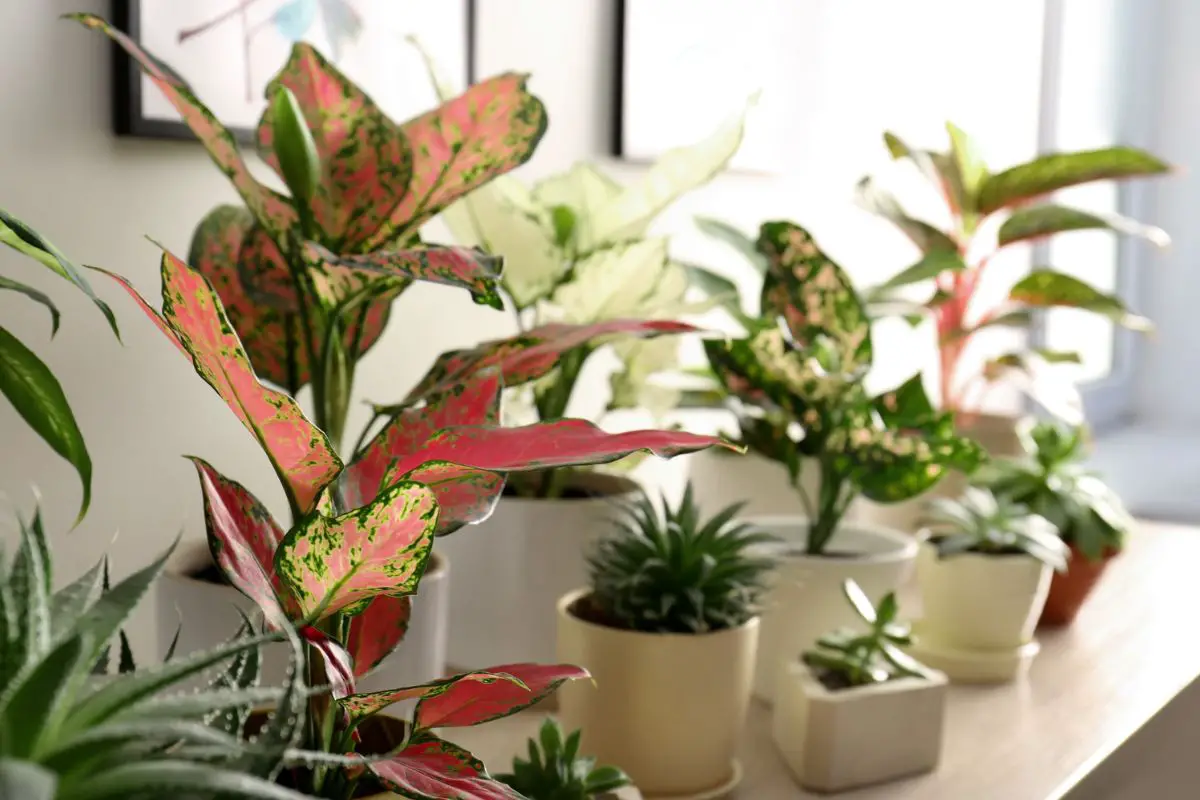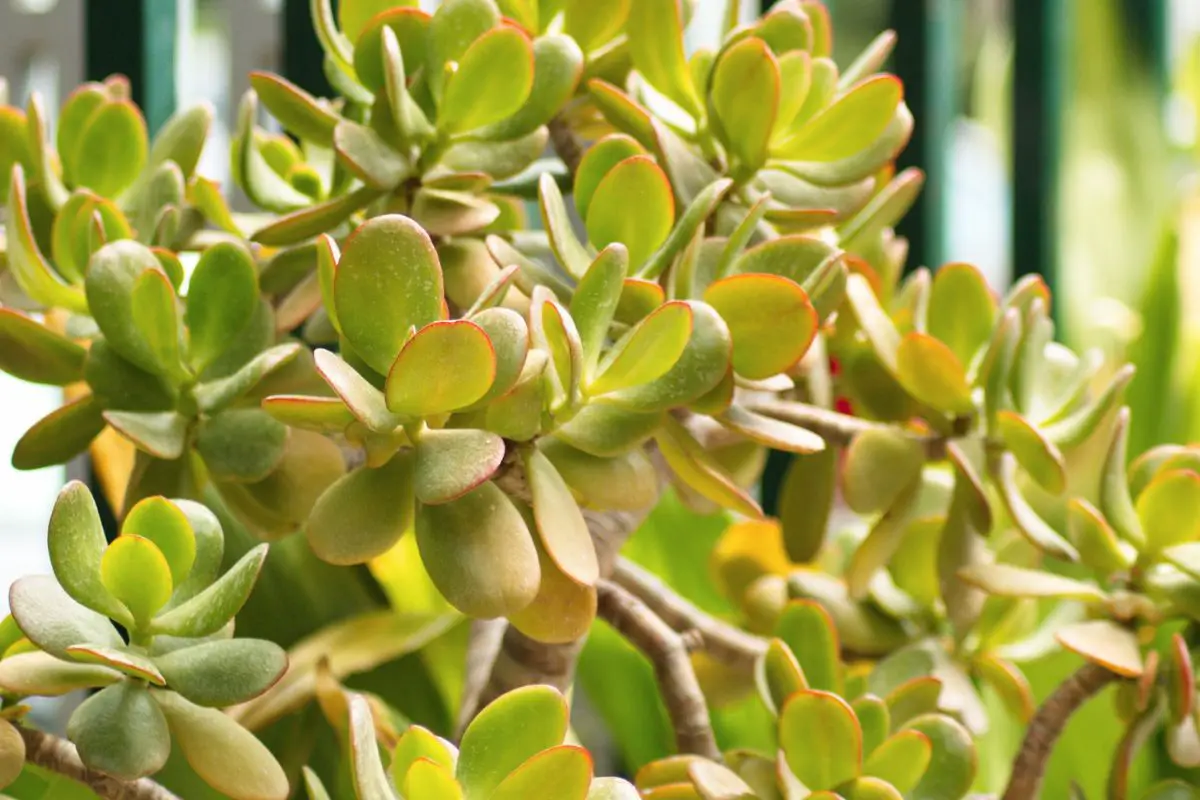Houseplants provide a lively touch of green to any indoor space. But since they’re not in their natural habitat, they require extra attention to keep them thriving, especially with their sunlight needs. Leaving your indoor plants in the same spot and position for extended periods can have negative consequences.
You must rotate your houseplants to ensure all parts receive adequate sunlight. Turning the pot by 90-180° once a week or every time you water it should be enough to ensure your plant grows healthily and evenly.
The habit of turning your houseplants doesn’t only ensure that they receive adequate sunlight and remain healthy. It also helps your plant grow more bushy and less leggy, maintaining a pleasant appearance. I’ll discuss these benefits in more detail in the rest of this article, so keep reading!

Plant Rotation: An Overview
Outdoor plants naturally go through day-and-night cycles where the sun rises in the east and sets in the west. This routine movement of light as the earth rotates provides suitable light conditions for plants to grow as they should—upwards or sprawling.
Houseplants, on the other hand, rely on human intervention to receive the amount of light they need to survive.
Plants absorb light energy through their leaves or other chlorophyll-containing parts like flowers and stems. They use light to convert water and carbon dioxide into starch or other forms of sugar as plant food.
Studies show that a plant’s photosynthetic rate and sugar content significantly increase with higher light intensity.
With the limited angle of exposure to sunlight indoors, houseplants focus their foliage and stem growth in the direction that faces the light. This plant behavior is called phototropism, which ensures the plant can maximize its access to light energy.
Benefits of Regular Turning
Rotating your houseplants can do more than just keep them alive.
The practice presents several other benefits, including:
- Even growth and aesthetics
- Improved light exposure and absorption
- Preventing leaning and bending
- Detecting pests and diseases
Let’s discuss these in more detail below:
Even Growth and Aesthetic Appeal
Many indoor gardeners prefer to keep small plants because of the limited indoor space. Similarly, bushier houseplants are preferable to taller ones.
Rotating your houseplants regularly can promote symmetrical growth and plant signaling.
Here’s how:
- Laterally growing plants like oxalis can become bushier with regular rotation and pruning.
- Flowering plants need longer daylight hours to signal the flower buds to form or open. Shorter daylight hours, on the other hand, will force your plant to go to rest or sometimes enter dormancy, depending on the plant species.
Improved Light Exposure and Absorption
If your houseplant remains in the same position for too long, it will direct its energy into putting out more foliage toward the side that receives more sunlight. This is a usual plant behavior to maximize the areas that receive and absorb light.
At early signs of plant stress due to insufficient light, you will notice that the leaves in the sun-exposed area are greener than the dark-exposed leaves.
The sun-deprived leaves may also gradually turn yellow and fall off, and there will be a noticeable lack of new foliage growth in that area.

Preventing Leaning and Bending
Legginess due to insufficient light is physiologically influenced by the hormone auxin, which is responsible for plant cell elongation. Light has an inhibitory effect on auxin concentration, meaning the parts exposed to sunlight will have lower auxin levels.
The higher auxin concentrations in plant stems facing away from sunlight encourage plant cells to expand, causing that part to grow longer with fewer leaves and the plant leaning toward the light.
Taller plants, like the fiddle leaf fig, are more likely to lean due to insufficient light. Proper light intensity and regular pot rotation will prevent this issue from occurring.
When turning the pot of a bending plant, double the amount of time the leggy part is facing the light to speed up the recovery. Fast-growing and healthy plants may show signs of improvement sooner, especially when remedied during the growing season.
Detecting Pests and Diseases
Plant pathogens and some plant pests like nematodes, whiteflies, and scales are sensitive to sunlight. In houseplants, fungal diseases, scales, and whiteflies are common issues.
Leaving your plant pot unrotated for too long will allow these pests and diseases to proliferate. They can grow underneath the dense foliage in the sun-exposed area or along the leggy stems of the sun-deprived area.
Giving your plant a quick scan every week as you water and turn it will help you diagnose or treat any problem sooner. In addition, rotating your plant regularly can protect it from sun stress and prevent fungi, scale, and whitefly populations from going out of control.
How Often and How Much to Rotate
Online resources have varied opinions regarding how often you should rotate your houseplants. One common guideline I agree with is turning your plant once a week. An alternative is to give your plant a turn every time you water it.
Let me explain the factors that influence the rotation angle and frequency:
Location and Light Conditions
The amount of light the plant receives and the direction it comes from can influence how often you should turn the pot.
Here’s a general guideline:
- Bright light (a half turn once every 1-2 weeks): A spot next to southern windows, a sunroom with windows from multiple sides, a room with bright windows and fluorescent lamps
- Moderate light (a quarter turn once a week): A spot next to an eastern window or a few feet (0.6 m) from southern or western windows
- Low light (a quarter turn once a week or every 3-5 days): A spot next to a northern window or a singular fluorescent lamp placed at an angle above the plant
Although my African violets enjoy low to moderate light conditions near my unobstructed northern window, I noticed that the sun-deprived sections had fewer blooms.
That’s when I decided to rotate them more frequently (every 5 days), especially during the growing season when they set out flower buds. The little experiment required patience and dedication, but it resulted in a more balanced flower growth the following year.
Growth Rate
Based on years of experience and experimenting with my houseplants, I found the following effective:
- Young plants or seedlings: A half turn once every 3-5 days
- Bushy, fast-growing plants: A quarter turn once a week
- Mature, slow-growing plants: A half turn once every 1-2 weeks or at watering
As I observed, plants that grow quickly usually require more frequent turns, especially during the growing season. Some common examples are pothos and philodendrons, which can quickly become leggy with insufficient light.
The same applies to sprouted seedlings indoors. During their faster growth season or stage, plants focus on elongation. Uneven sunlight distribution during this time will result in a more pronounced leaning or bending.
Younger plants have fewer leaves, so there’s no risk of shading each other out. Giving them a half turn more often will ensure equal light access and encourage them to sprout new leaves evenly, providing the young plant with proper balance early during their development.
Mature and slow-growing plants, such as cacti and succulents, need less frequent rotation. The flat photosynthetic pads or the circular stems of many cacti species and the low growth of many succulents will do well with half turns.

Other Considerations
Some signs that your plant wants more sun and needs to be rotated include:
- Paler or yellowing leaves at the side facing away from sunlight
- Drooping or wilting leaves in the sun-deprived area
- Longer spaces between nodes on the stem
- New leaves are smaller
- Leaf scorch or burn marks on the side facing the sunlight
Your plant may recover from issues associated with insufficient and imbalanced light, but there’s no telling how long the recovery will take. It’s worth remembering prevention is always better than cure and giving your plant a quarter or a half turn weekly wouldn’t hurt.
Best Practices for Effective Rotation
Although indoor plant rotation seems like a straightforward process, there are still some things to keep in mind to reap the best rewards.
Here are some of the best practices for rotating houseplants:
Step-by-Step Guide
- Mark the mouth of your pot with numbers (1-4) or letters (A-D) at equal distances.
- Lift the pot or slide it to give your plant a 90-180° turn. Remember to stick to a consistent angle. For instance, if you decide to use 90°, give your plant a quarter turn every time and in only one direction (i.e., position A to D).
- Water your plant as usual until the excess drains out. It’s best to water the pot after rotating it because wet soil is heavier.
- If you have to pour out the water from the plant saucer, ensure that the pot is properly positioned based on the marking when you place it back.
I find the markings useful because I bottom-water some plants. The process usually takes 10-30 minutes and I won’t be able to remember the proper pot position without the markings.
This step isn’t necessary, but it’s what works for me, so I don’t forget when and how to rotate my plants. I hope you find this tip practical and helpful too!
Tips for Different Plant Types
Various houseplants can tolerate different light intensities but thrive best when grown in their preferred light conditions. Flowering plants can also grow healthy foliage in lower light but will be unlikely to put out blooms.
That said, here are some popular houseplants and their corresponding light and rotation needs:
| Houseplant Name | Light Requirement | Rotation Needs |
| African violets | Low | Weekly (every 3-5 days during the growing season) |
| Aloe vera | High | At watering (every 10-14 days) |
| Amaryllis | Medium-high | Weekly |
| Anthurium | Medium-high | Weekly |
| Cacti | Very high | At watering (every 10-14 days) |
| Calathea | Medium | Weekly |
| Ficus (fiddle leaf figs) | Medium | Weekly |
| Jade plant | High | At watering (every 10-14 days) |
| Monstera | Low-medium | Weekly |
| Peace lily | Low-medium | Weekly (or every 3-5 days during the growing season) |
| Peperomia | Low | Weekly |
| Philodendron | Low-medium | Weekly (or every 3-5 days in lower light) |
| Pilea | High | Weekly (prefers moist soil or weekly waterings too) |
| Pothos | Low-medium | Weekly (or every 3-5 days in lower light) |
| Spider plant | Medium-high | Weekly |
| ZZ plant | Low-medium | Weekly (or at watering in brighter conditions) |
In the table above, the common pattern is that plants that thrive in low to medium light need more frequent rotation, whereas those that thrive in high levels of light can do away with less.
Most cacti species and jade plants are slow-growing plants, further supporting the need for less frequent turns. Their succulent pads or leaves provide some layer of protection from leaf scorch, so they can endure up to two weeks in direct sunlight before being rotated.
Still, there are some special considerations based on plant type or species:
- Flowering plants: These plants typically require higher light intensity. They’re fine with weekly turns and produce abundant blooms in a sunny spot. However, low-light flowering plants like peace lilies and African violets need more frequent turns to ensure abundant and balanced bloom development.
- Sprawling or climbing foliage plants: Pothos and philodendrons like bright, indirect light (medium) but can tolerate low light. These fast-growing, sprawling plants need more frequent turns when in low-light areas to prevent legginess and sparse leaves.
Pro-tip: Put heavy or large plants on plant caddies with wheels to make rotation or proper placement easier.
Ficus species can grow large and can be finicky with their light needs when grown as indoor plants. It takes a few trials and errors before finding the best spot for them so it’s best to place them on rolling caddies that will make it easier to move or turn them around.

Seasonal Considerations
Various seasons also play a part in a houseplant’s rotation needs.
Here are some examples:
Seasonal Dust or Light Blockage
Dust during dry and windy days or snow in winter can accumulate on windows and block about 50% of light. Regardless of how well you stick to your plant rotation routine, the lower light levels can still leave your plants deprived. Be sure to clean both sides of the window regularly.
Sun Position
In the US and regions in the northern hemisphere, the sun positions in summer and winter can vary. The sun is higher in the summer and lower in the winter.
A plant far from a southern window can receive direct light in winter when the sun is almost at the level of the window. This can also be affected by how high your window is, depending on how many floors your home has and on which floor your plants are.
Inspect whether your houseplant is receiving direct light when it shouldn’t and move it a few feet (0.6 m) away from the window until it’s out of direct light.
Plants that normally do well in direct sunlight will need more frequent turns during seasons or days with intense light and temperatures to prevent leaf scorch from extended periods of sun exposure.
Adjust your rotation practices based on seasons and varying light conditions. If you’re unsure how to make the adjustments, pay attention to your plant’s behavior.
Most foliage plants will display discoloration in case of sun stress. Variegated plants will also lose their variegation if they receive too much or too little light.
Fluorescent or Artificial Lights
Artificial lights are also excellent alternatives to sunlight during dark or cloudy days. Foliage plants with low to medium needs will do well with fluorescent lamps. Flowering houseplants will need full-spectrum grow lights for better chances of blooming.
You can refer to the table below for a suitable artificial light setup based on plant lighting needs.
Note: The following suggestions work if you have a singular 40-watt lamp and the plants below it don’t have access to natural light.
| Light Needs | Required Light Intensity (in foot candles) | Number of Lamps and Distance from Plant Tip | Duration |
| High (cacti, succulents, sun-loving flowers) | Over 1000 ft-c | 4 lamps, 6 inches (15 cm) | 12-18 hours |
| Moderate (spider plant, calathea, Ficus spp.) | 250-1000 ft-c | 2 lamps, 6 inches (15 cm) | 10-14 hours |
| Low (pothos, philodendron, ZZ plant, African violet) | 50-250 ft-c | 2 lamps, 1 foot (30 cm) or 1 lamp (6 inches (15 cm) | 8-12 hours |
The above recommendations are general guidelines. Your plant’s needs can vary depending on how much natural light is available in your home.
I only use grow lights in winter to supplement my tropical houseplants’ lighting needs because they normally don’t go dormant.
I usually leave the lights on for 6-10 hours a day or 12-14 hours on cloudy days. That’s from 5-8 AM and 5-8 PM on sunny days or 7 AM to 7 PM on cloudy days.
It’s best to use grow lights with stands and bendable necks so you don’t have to rotate your pots anymore. Just place a 40-watt lamp a foot (30 cm) directly above your houseplant. A foot (30 cm) of lamp length is enough to supplement a square foot (0.09 sqm) of plant.
Observe your plant’s reaction to the artificial light and make adjustments when necessary. If your plant has pale or yellowing leaves, it can indicate that the light intensity is not enough. You may need to move the light closer to the plant or add more lamps.

Common Mistakes to Avoid
For beginner gardeners who like to follow new gardening trends, it’s sometimes possible to overdo your plant care routine and harm your plant’s health.
It’s important to avoid common mistakes with houseplant rotation, including the following:
Over-Rotation
Houseplants do need regular rotation for optimum light absorption. However, turning your plant too frequently is unnecessary. It can also be counterproductive when your plant is recovering from legginess. Over-rotation will delay its recovery.
Rotating in Different Directions
Rotating your plant in different directions will cause uneven growth because some parts will have multiple light exposures while others remain in the dark. Only turn your pots in one direction to keep the process organized and effective.
Ignoring Plant-Specific Needs
The final mistake is ignoring plant-specific needs when following general guidelines. Remember that there are a few plant-specific exceptions, such as the low-light flowering plants discussed above.
Additional Tips for Plant Care and Maintenance
Houseplant rotation is essential for indoor plant care. It becomes even more effective if complemented with other practices like pruning and repotting.
Prune Leggy Growth and Excess Foliage
If your plant leans toward the light and sheds leaves on the dark side, it won’t grow new leaves along the leggy stems. It’s best to prune the leggy stems, especially with multi-stemmed plants.
Always use sterile pruning shears to prevent the potential spread of diseases. Also, remove about 30% of the excess foliage that pulls the plant’s weight to the sun-exposed side. This will improve sun exposure to the bottom leaves and enhance overall air circulation.
Repot Overgrown Plants
Overgrown plants and those that produce multiple offsets (like spider plants) will need repotting to improve the air circulation around them. The dense foliage all over the pot will inevitably shade the innermost foliage and no amount of rotation will help with that.
Moreover, overcrowding will eventually stunt plant growth and present more issues like underwatering and increased susceptibility to pests.

Outdoor Plants
Before moving your houseplants outdoors during the warm seasons, be sure to acclimate them to brighter sunlight gradually. Give them an hour outdoors and increase the number by another hour every day for up to 1-2 weeks.
Once properly acclimated, you typically don’t have to rotate your plant if it’s in an open space.
However, if it’s in a shady spot next to a wall on the balcony or roofed porch, you’ll still need to give it a quarter or half turn weekly.
Final Thoughts
Rotating your houseplants regularly will help improve their health, appearance, symmetrical growth, and pest resistance.
Houseplants receive less light than they normally should in their native environment. To ensure your plant lives to its full potential, include regular rotation in your plant care routines.
If you have unique and efficient ways to rotate your plant or ensure balanced light exposure and growth, feel free to share your experience and tips!






